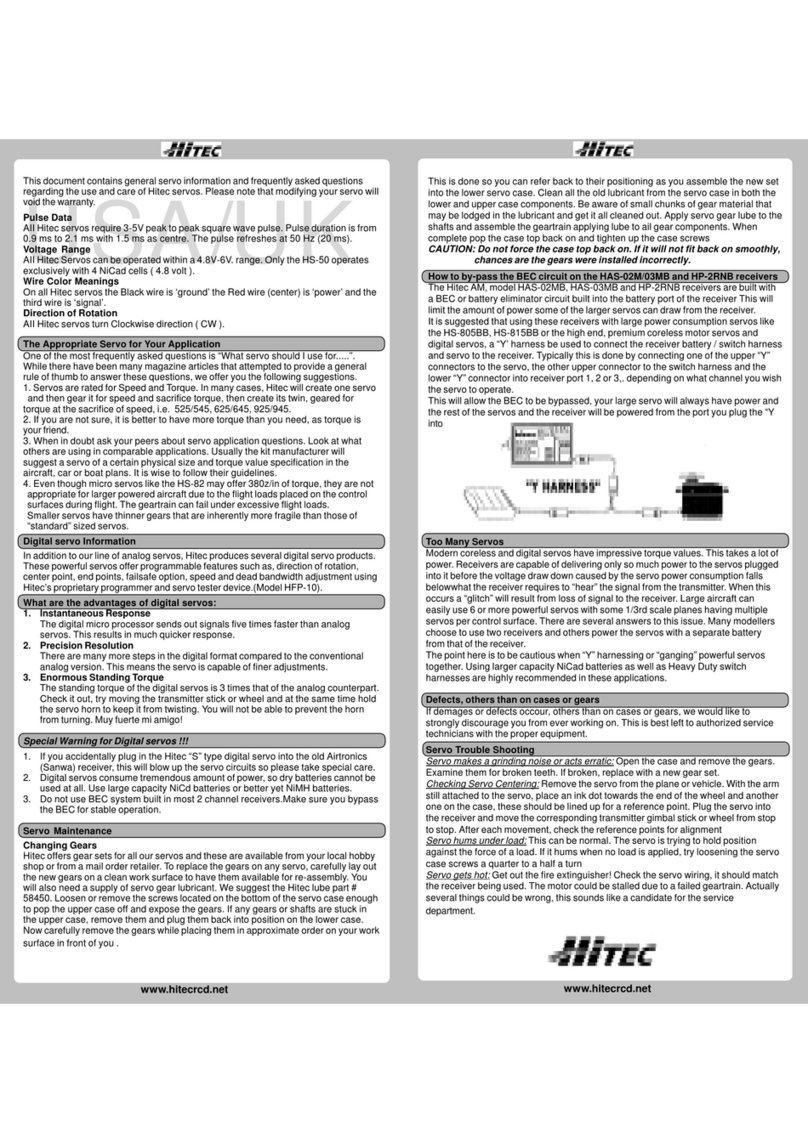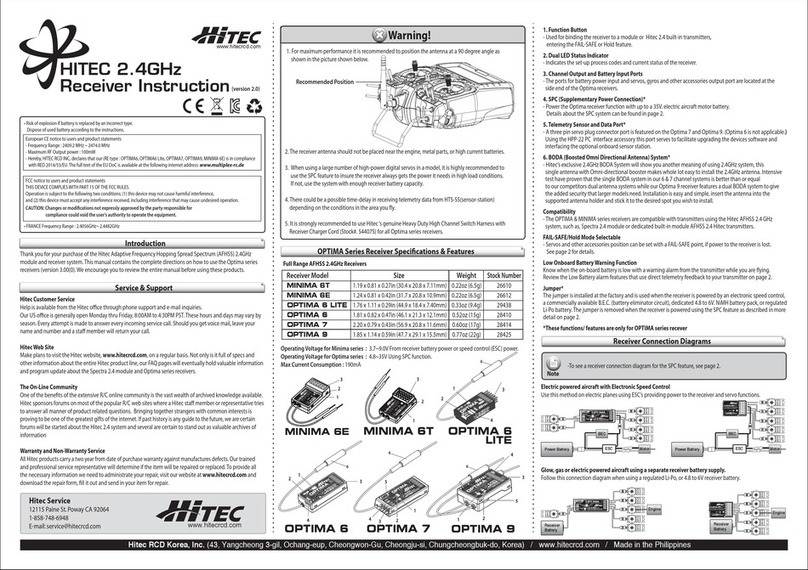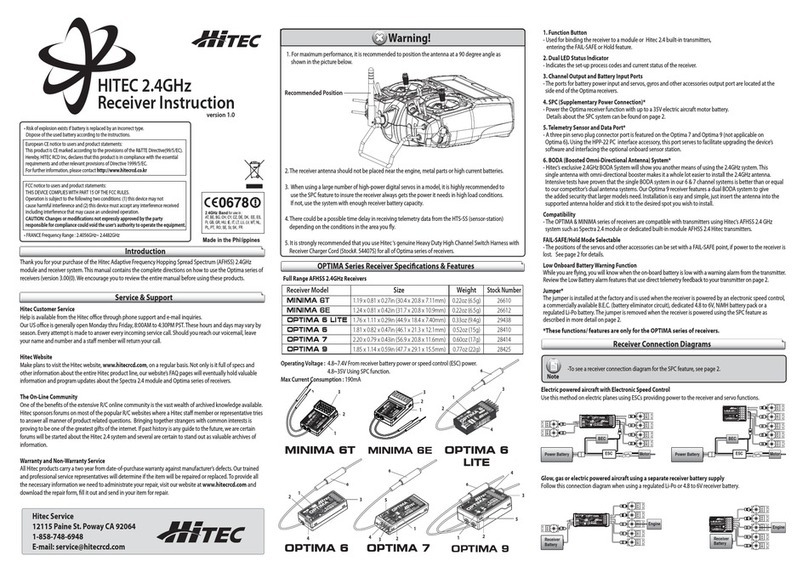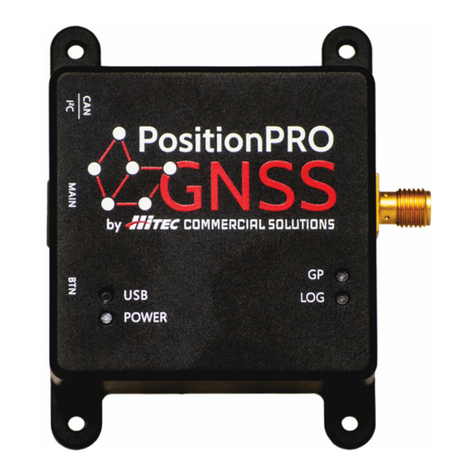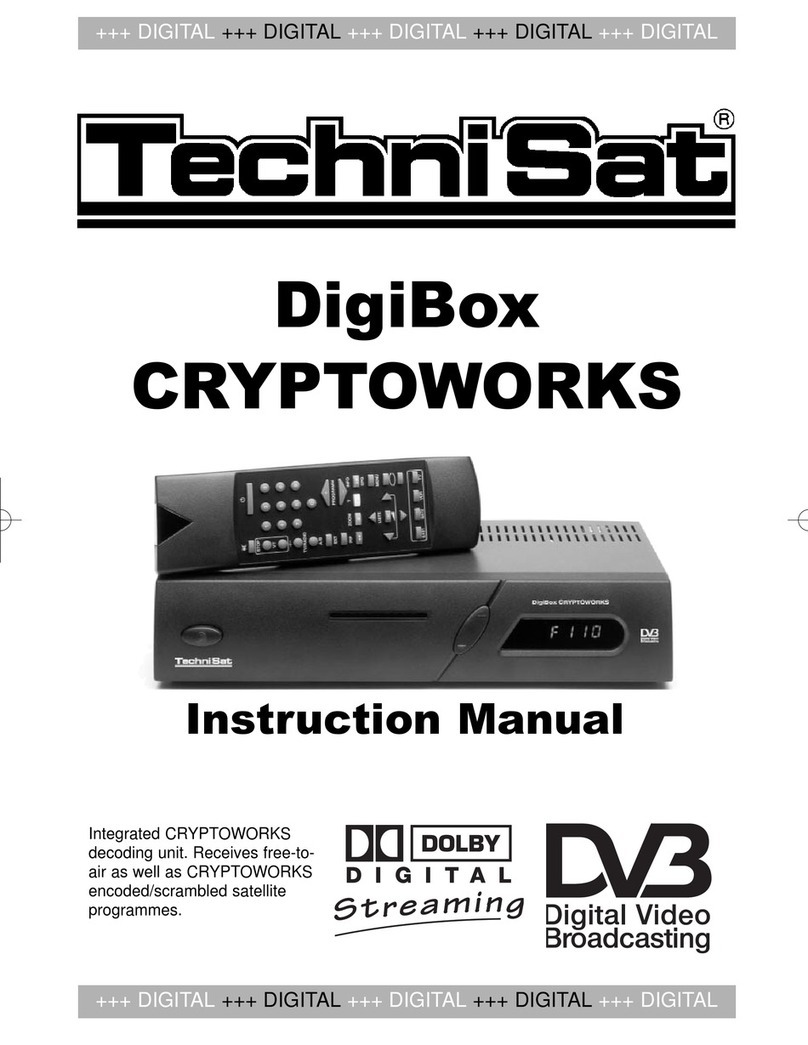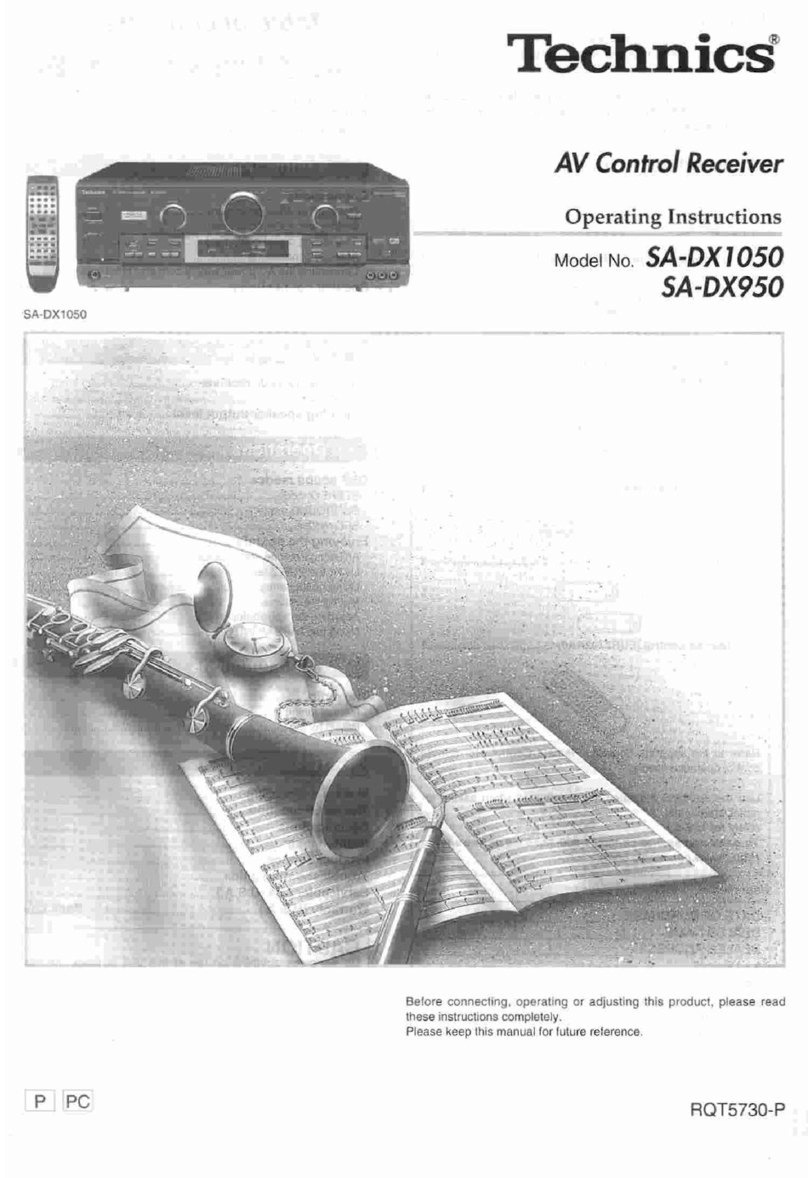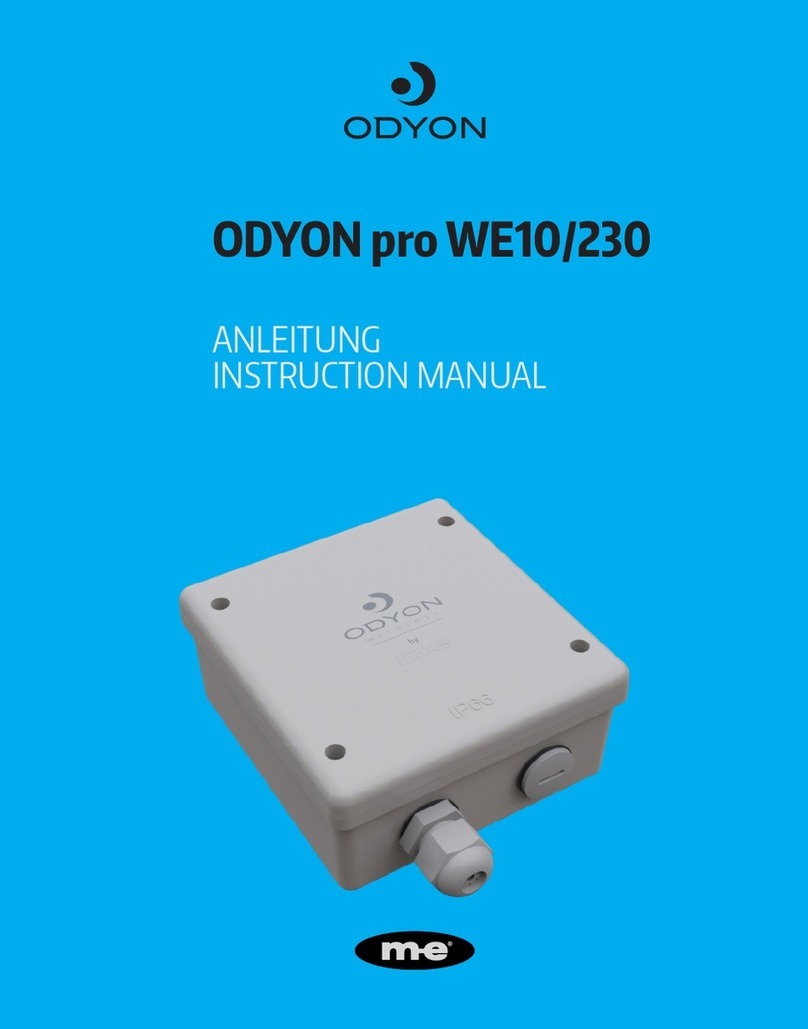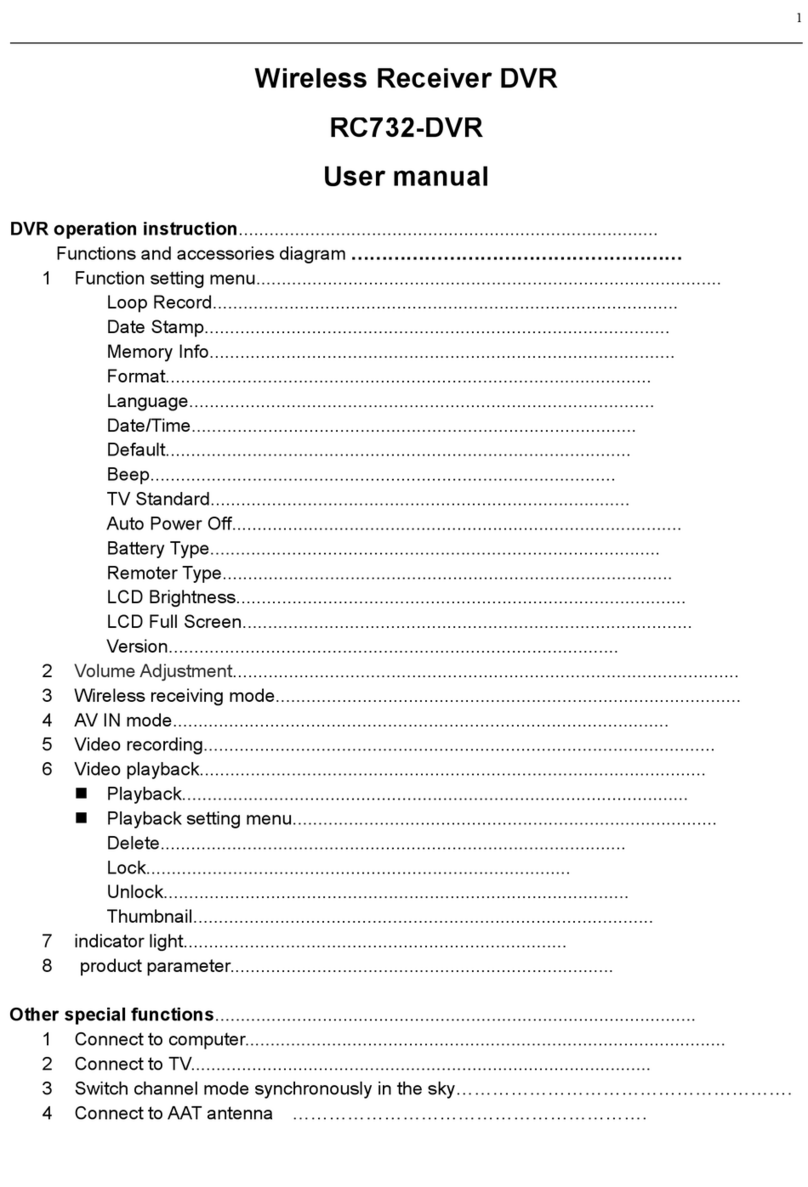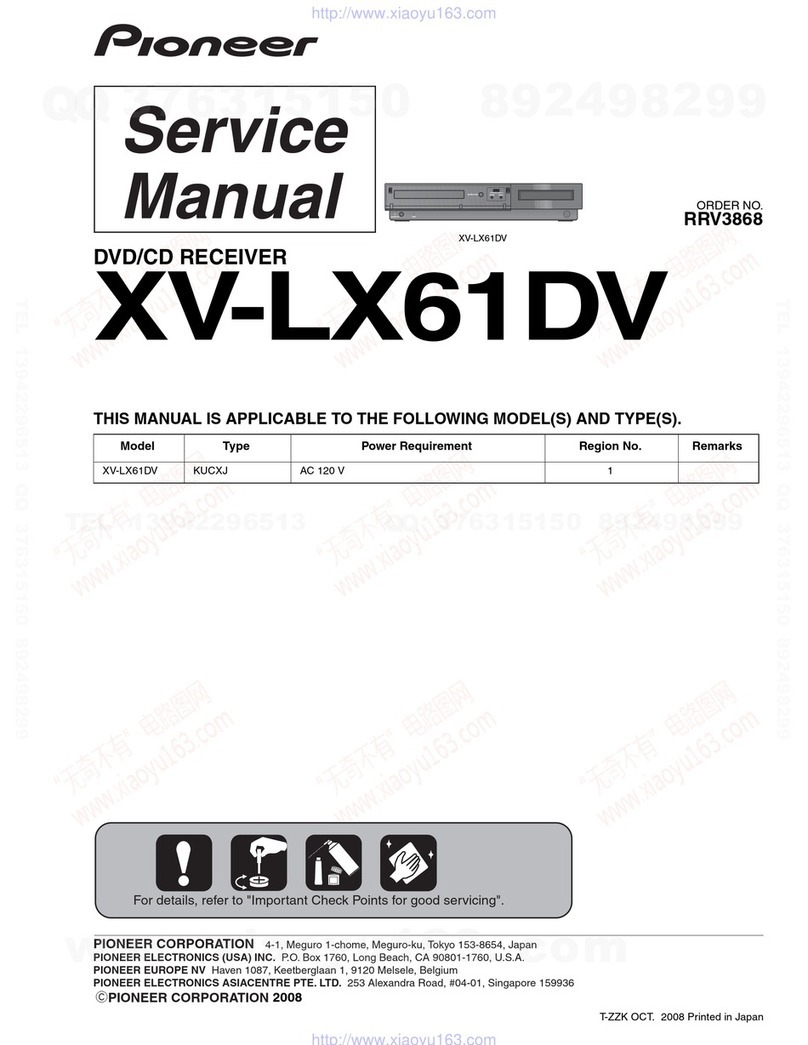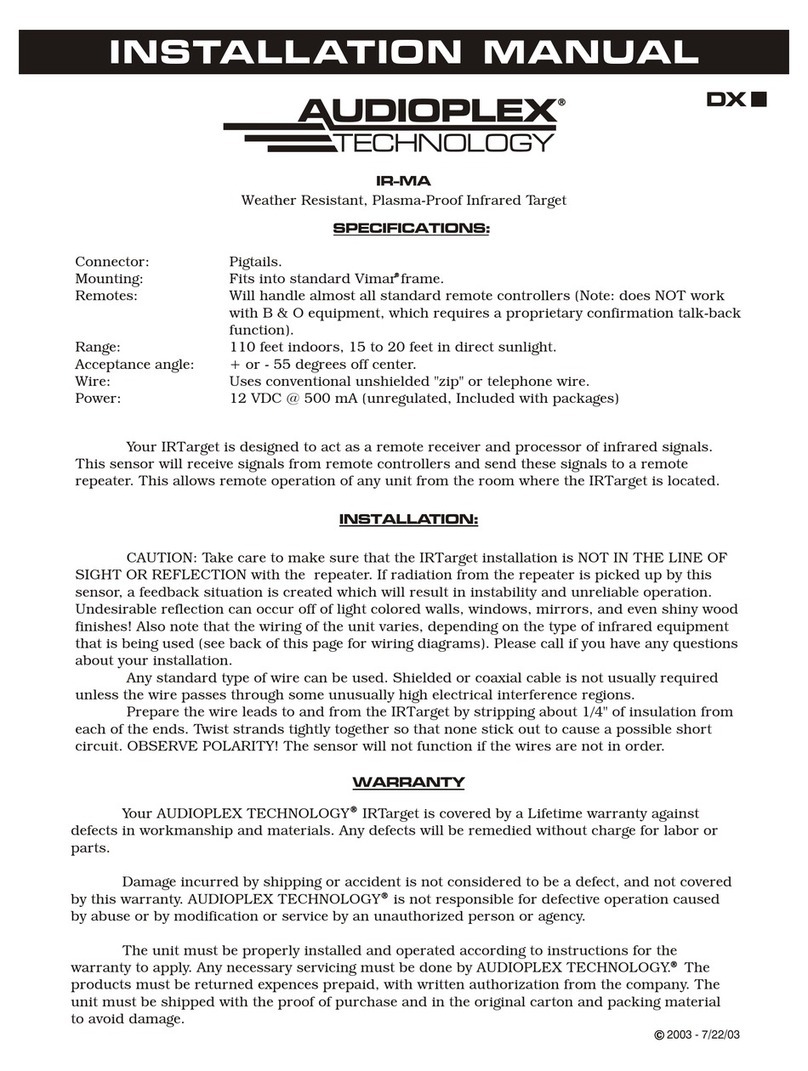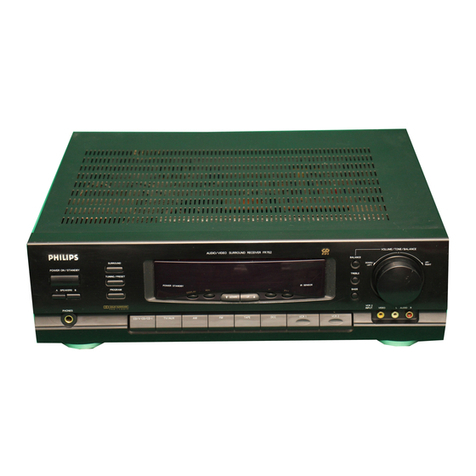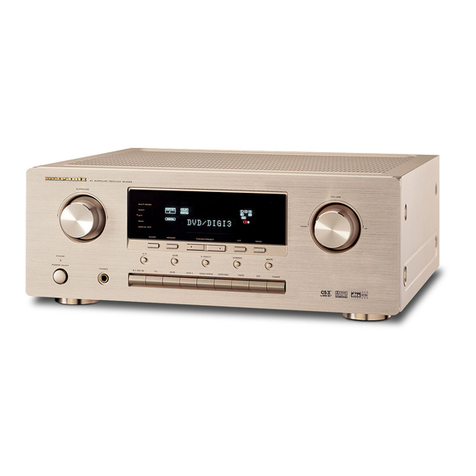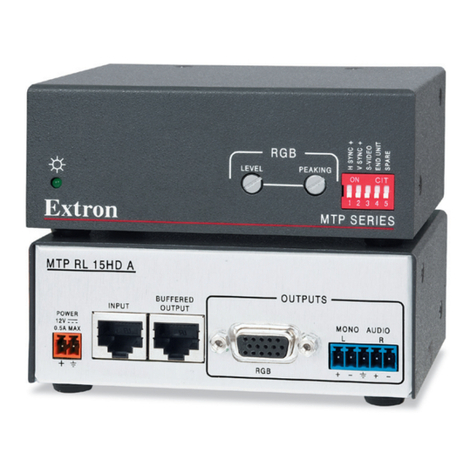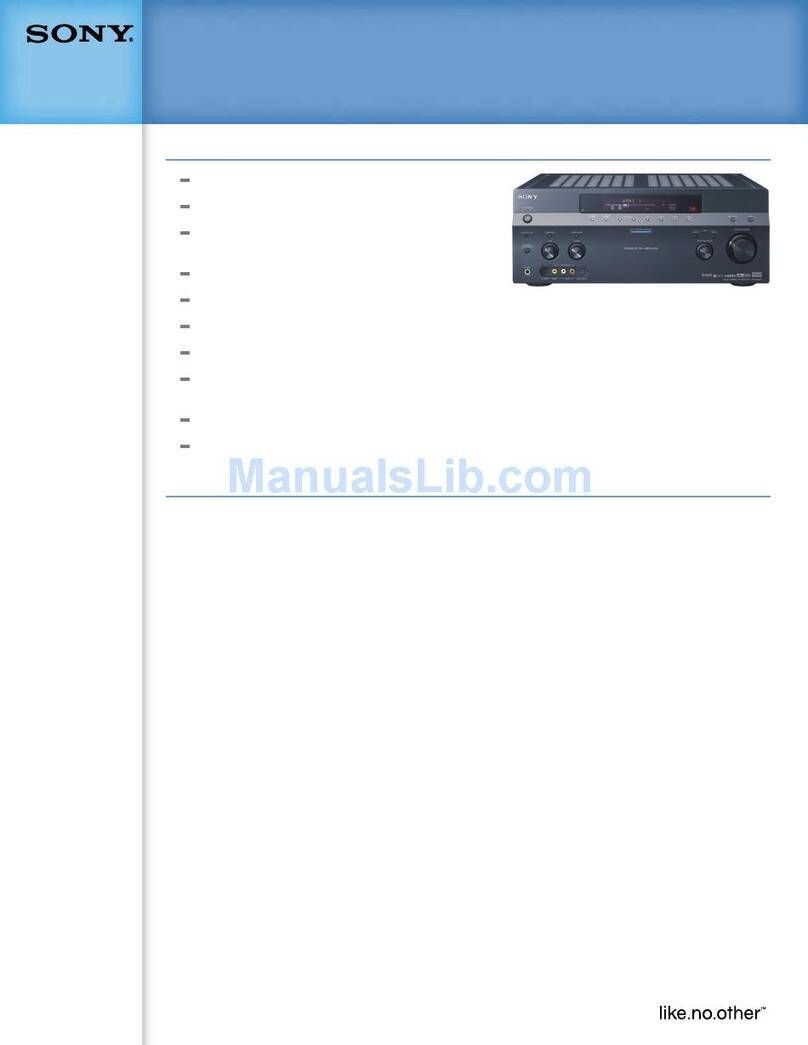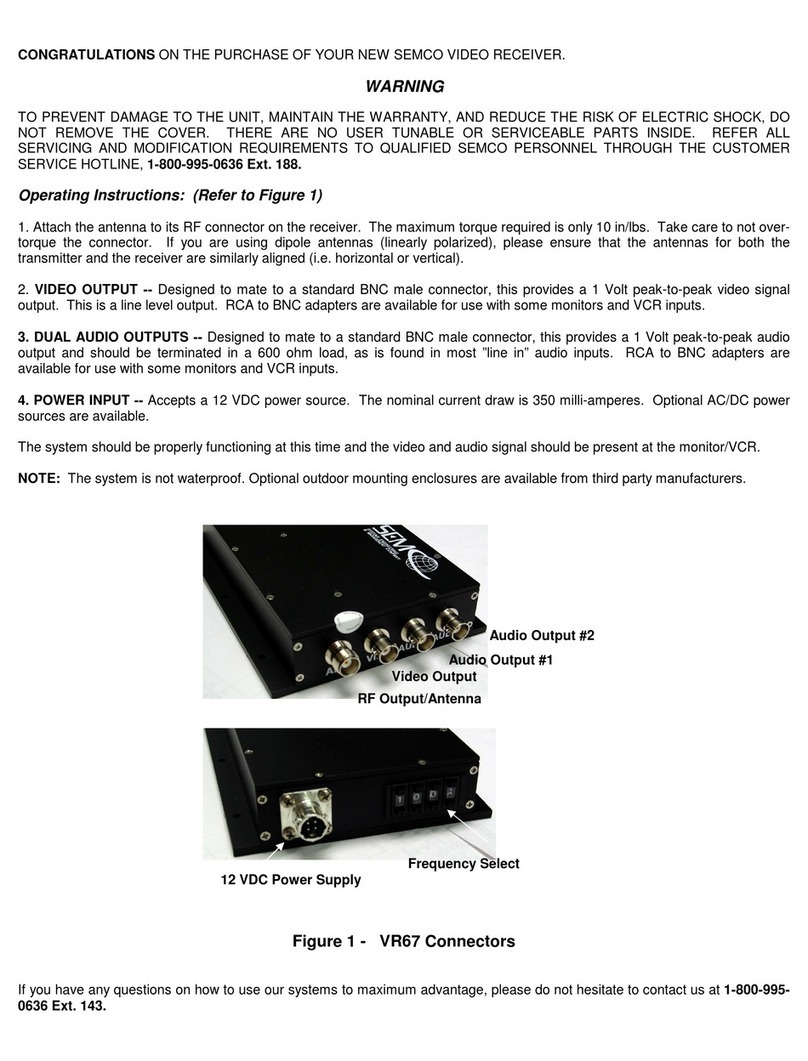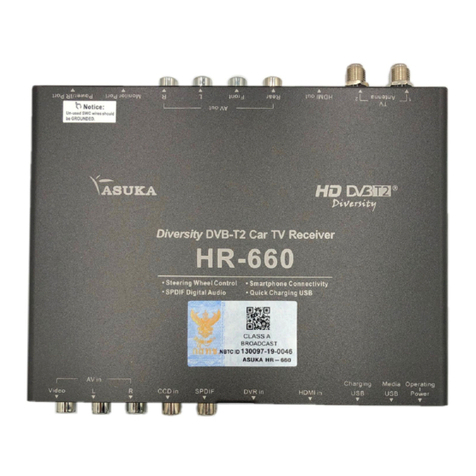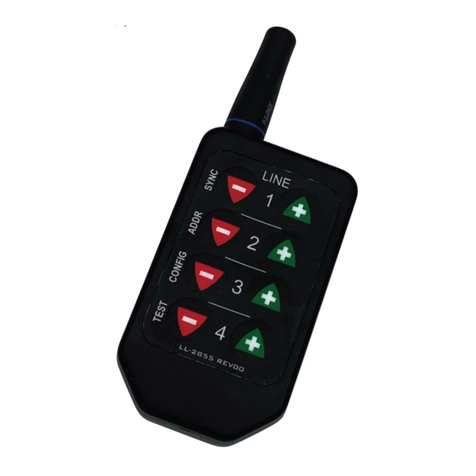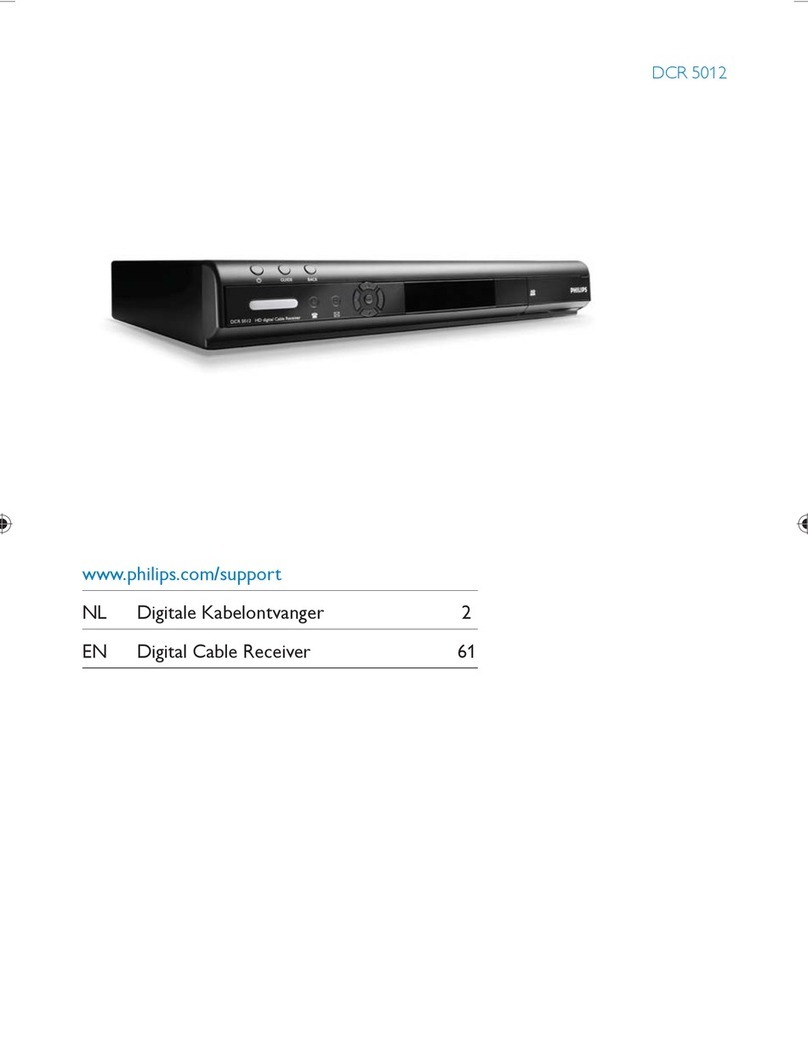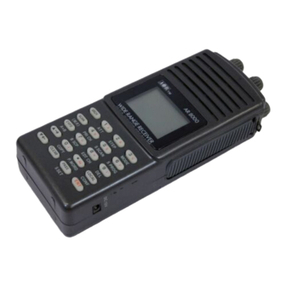Hi-Tec Flash8 User manual

8 Channel 2.4 GHz Aircraft Computer Radio System

8 Channel 2.4 GHz Aircraft Computer Radio System8 Channel 2.4 GHz Aircraft Computer Radio System
Section 1: Introduction Section 1: Introduction
2 3
Before Using
It is recommended that you read this manual in its entirety to become familiar with the product and its
features. Failure to operate this product properly can result in damage to property and/or cause serious
injury.
Important Notices
Please note that Hitec reserves the right to make production changes during the life of our product lines
that may impact the information in this manual. For the most up-to-date information on this and any
other Hitec product, visit our web site at www.hitecrcd.com.
DISPOSAL OF eWASTE
This symbol indicates that when this type of electronic device reaches the end of its service life, it cannot
be disposed of with normal household waste and must be recycled. To nd a recycling center near you,
refer to the internet or your local phone directory for electronic waste recycling centers.
STATE OF CALIFORNIA PROPOSITION 65 WARNING:
This product contains chemicals known to the State of California to cause cancer. Use caution when han-
dling this product and avoid exposure to any electronic components or internal assemblies.
Regulatory information
Hitec RCD Inc.
Radio Control Hobby Model Controller
Model Name: Flash 8
Operating Frequency: 2.4GHz
Power
Charger: None
Transmitter: 6.4V (2-cell LiFe Battery)
This device complies with part 15 of the FCC Rules. Operation is subject to the following two conditions:
1. This device may not cause harmful interference.
2. This device must accept any interference received, including interference that may cause undesired
operation.
This product was designed for and intended for use with hobby models designed specically for
radio control only. Hitec RCD disclaims all liability for any damages or injuries resulting from the
use of this product for anything other than its intended purpose.
Warning Note
TipTip
Tip
Caution
This radio control transmitter is not intended for use by children under 14 years of age. Adult
supervision is required for any user under the age of 14.
Warning Note
TipTip
Tip
Caution
Introduction
Quick Start Guides
Introduction....................................................................................................................................6
Safety Information........................................................................................................................7
Product Support............................................................................................................................8
Steps for Successfully Programming the Flash 8 Radio...................................................9
System Component Specications.......................................................................................10
Terms and Icons...........................................................................................................................11
Powering the Flash 8..................................................................................................................12
Transmitter Controls...................................................................................................................13
Main Menu.....................................................................................................................................14
Transmitter Warnings.................................................................................................................14
Maxima Series Receivers..........................................................................................................15
Optima and Minima Receivers...............................................................................................17
Fail Safe and Hold Mode Setup..............................................................................................21
Telemetry System........................................................................................................................22
Range Check Function..............................................................................................................23
Scan Mode Function..................................................................................................................24
SLT System.....................................................................................................................................25
Airplane Quick Start Guide.......................................................................................................26
Helicopter Quick Start Guide...................................................................................................28
Table of Contents
System Menu Programming
System Menu.................................................................................................................................30
Model Select Menu.....................................................................................................................31
Model Type Menu .......................................................................................................................33
Model Type ACRO Menu Programming...............................................................................34
Model Type GLID Menu Programming.................................................................................35
Model Type HELI Menu Programming.................................................................................37
Channel Selection Menu...........................................................................................................38
Trim Step.........................................................................................................................................39
Trainer Function...........................................................................................................................39
Control Modes..............................................................................................................................42
Management Menu....................................................................................................................42

8 Channel 2.4 GHz Aircraft Computer Radio System8 Channel 2.4 GHz Aircraft Computer Radio System
Section 1: Introduction Section 1: Introduction
4 5
ACRO and Glider Programming
Acro and Glider Programming Menu.............................................................60
Flight Conditions...............................................................................................61
Aileron Differentials..........................................................................................63
Elevon Mixing....................................................................................................64
V-Tail Mixing.......................................................................................................66
Ailevator Mixing................................................................................................68
Aileron to Rudder Mixing................................................................................70
Elevator to Camber Mixing..............................................................................72
Camber Mixing (GLID Only).............................................................................75
Flap Control........................................................................................................78
Landing Mix......................................................................................................80
Butterfly Mixing (GLID Only)...........................................................................82
Gyro.....................................................................................................................85
Throttle Cut (ACRO Only).................................................................................87
Throttle Curve....................................................................................................88
Table of Contents
Common Model Programming Menu
Working with the Common Model Function Menus...................................45
Servo Reverse....................................................................................................46
Sub Trims............................................................................................................46
Dual Rates..........................................................................................................47
Exponentials......................................................................................................48
Switch Assignment...........................................................................................48
End Point Adjustments ...................................................................................49
Servo Speed ......................................................................................................50
Programmable Mixes ........................................................................................51
Timers.................................................................................................................55
Servo Monitors..................................................................................................57
Throttle Lock......................................................................................................58
Helicopter Programming
Using the Telemetry System
Helicopter Programming Menu.....................................................................91
Gyro.....................................................................................................................91
Throttle Cut.......................................................................................................94
Throttle Hold.....................................................................................................95
Revolution Mixing............................................................................................96
Swash to Throttle Mixing................................................................................99
Swash Mixing..................................................................................................101
Throttle Curve................................................................................................102
Pitch Curve......................................................................................................105
Flight Conditions............................................................................................107
Swash Ring......................................................................................................109
Throttle Lock..................................................................................................110
Working with the Sensor Menu....................................................................111
GPS.....................................................................................................................112
RPM....................................................................................................................112
Temperature.....................................................................................................113
Battery...............................................................................................................114
Servo.................................................................................................................115
Advanced.........................................................................................................115
Viewing Telemetry Data.................................................................................116
Table of Contents
Hardware Adjustments
Stick Length Adjustments..............................................................................117
Stick Lever Tension Adjustment / Mode Change.......................................117

8 Channel 2.4 GHz Aircraft Computer Radio System8 Channel 2.4 GHz Aircraft Computer Radio System
Section 1: Introduction Section 1: Introduction
6 7
Introduction
Thank you for purchasing the Flash 8 radio by Hitec. Designed for all popular aircraft types, the Flash 8
delivers lightning fast response with its 7ms frame rate and 4096 step resolution. You can trust Hitec’s
bi-directional, AFHSS (Advanced Frequency Hopping Spread Spectrum) 2.4GHz technology to guide your
sailplane, gas, glow or electric power plane or heli to a safe landing every ight. We are sure you will nd
the Flash 8 one of the easiest radios to program. Please review this entire manual to learn how to safely
use your new radio. It’s a good idea to keep the manual with your Flash 8 at all times.
Features
1. Triple Protocol 2.4GHz Transmitter: The Flash 8 can transmit using three dierent 2.4GHz signals.
a. Our original AFHSS bi-directional telemetric 2.4Ghz signal used with the Minima and Optima
series receivers.
b. Our Low Latency G2 AFHSS 2.4GHz signal used with Maxima series receivers.
c. The SLT™ protocol found in many Tx-Ready aircraft. For more info visit www.Tx-Ready.com.
2. 3 in 1 Radio: With advanced Acro, Glider and Helicopter programming you have the ability to advance
your ying skills without having to upgrade your radio.
3. Precise 4096 Resolution: At two to four times the resolution of most transmitters, the Flash 8’s 4096
step resolution gives you more precise and crisp servo movement.
4. Backlit Graphical LCD screen: Makes it easy to see the programming and telemetry displays.
5. Push Button / Jog Dial Programming Interface: So that programming the Flash 8 is a breeze.
6. 8 Assignable Switches and 2 Sliders: Gives you plenty of choices for total control.
7. Telemetry Capabilities with our Optima Receiver: Keeps you informed of what’s going on in your
plane.
8. DCS Port (Battery Voltage Power Out): Powers optional accessories such as VR goggles or head
tracking units.
9. Memory for 30 Separate Models: Powers optional accessories such as VR goggles or head
tracking units.
Safety Information
Flying models can be dangerous if proper safety precautions are not followed. Here are a few critical
safety suggestions to keep you and others safe.
Are you experienced?
Flying models is not an intuitive process. Most accomplished model pilots were taught by another
modeler. We encourage you to seek help during your early ight experiences and, if required, during
the building and radio gear installation process. Unlike some other hobbies, model airplane ying has
evolved into a social event. There are approximately 2,500 model aircraft clubs in America. Friendship and
help could be right around the corner. Ask your local hobby shop about clubs in your area.
Where to Fly
Having enough land for your own model airport is rare. Most of us y at club administrated model elds.
The local ball eld can be tempting but rarely has the space needed and your liability is high should you
damage property or hurt an innocent bystander. We recommend you y at a sanctioned model aircraft
eld.
Join the AMA
In America, the Academy of Model Aeronautics (AMA) is an organization of model enthusiasts that
provides resources and insurance to modelers. The AMA also lobbies the Government concerning
legislation that impacts modelers. Visit their web site for more information at www.modelaircraft.org.
Academy of Model Aeronautics
5151 East Memorial Drive
Muncie, Indiana 47302
Toll Free: 800 435-9262
Fundamental Guidelines for Safe Flying
1. Model aircraft can be dangerous when operated or maintained improperly.
2. DO NOT y over people or personal property.
3. DO NOT y in adverse weather conditions or high winds.
4. The equipment we use in the R/C hobby is sensitive electronic gear. Have receivers checked after
a crash before using them in another aircraft.
5. DO NOT y under the inuence of alcohol or drugs or if you are feeling ill.
6. DO NOT y near power lines or transmission towers.
7. If available use the Fail-Safe function to lower the throttle in case of a signal“lock-out.”
8. DO NOT y alone.
Safety Information Regarding Your Radio System
1. Make sure you do a range check before ying. If it does not range check satisfactorily, DO NOT y.
2. Know the condition of your batteries. Make sure they are suciently charged.
3. Make sure all control surfaces respond correctly to the input from the transmitter.
4. Be sure that the throttle is o when turning on your airplane.
5. Always turn your transmitter on rst and turn it o last.
6. If the controls don’t respond properly during ight, land immediately.

8 Channel 2.4 GHz Aircraft Computer Radio System8 Channel 2.4 GHz Aircraft Computer Radio System
Section 1: Introduction Section 1: Introduction
8 9
Flash 8 Programming Support
While every attempt was made by the Flash 8’s developers to make the software interface easy and
logical, most users will require programming help at some point. There are several “get help”options
available to you.
Hitec Customer Service
Help is available from the Hitec oce through phone support and e-mail inquiries. The U.S. oce is
generally open Monday thru Friday, AM 8:00 to PM 4:30 PST. These hours and days may vary by season.
Every attempt is made to answer every incoming service call, but should you get voice mail, leave your
name and number and a sta member will return your call.
Hitec Web Site
Make plans to visit the Hitec web site on a regular basis at www.hitecrcd.com. There you will nd specs
and other information about the entire Hitec product line, and soon our FAQ pages will hold valuable
information about the Flash 8.
The On-Line Community
One of the benets of the extensive R/C online community is the vast wealth of archived knowledge
available. Hitec sponsors forums on most of the popular R/C web sites where a Hitec sta member
or representative answers all manner of product related questions. Bringing together strangers with
common interests is proving to be one of the greatest gifts of the internet. If past history is any guide to
the future, we are certain forums will be started about the Flash 8.
Warranty and Non-Warranty Service
All Hitec products carry a two year from date-of-purchase warranty against manufacturer’s defects. Our
trained and professional service representative will determine if the item will be repaired or replaced. To
provide all the necessary information we need to administer your repair, visit our web site at
www.hitecrcd.com to download the repair form. Complete the form and send in your item for repair.
Hitec Service
12115 Paine St.
Poway CA 92064
(858)748-6948
Product Support Steps for Successfully Programming the Flash 8 Radio
Using this Manual
This manual is a valuable resource detailing the programming and operation methods of the Flash 8
radio. The Flash 8 manual is divided into seven distinct sections:
1. Introductory material that is mandatory reading. This is where you will learn detailed information that
will be invaluable to the successful programming of the Flash 8.
2. Airplane/Gilder and Helicopter quick start guides.
3. System menu programming common to all models.
4. Model Menu programming common to all models.
5. Model menu programming common to all Airplane and Glider models.
6. Model menu programming specic to Helicopter models.
7. Using the Flash 8’s Telemetry Capabilities.
Warning, Caution, Note and Tip Boxes
Throughout the manual, you will see important information inside a labeled box. Take note of this
important information.
Warning Note
TipTip
Tip
Caution
Warning: This icon alerts you to warnings that relate to your safety and help you avoid causing damage to
your equipment.
Caution: This icon indicates that careful attention must be paid.
Tip: This icon points out valuable technical information.
Note: This icon indicates that further information is available.
User Interface
User Interface
The Flash 8 utilizes a jog dial/push button and a back button to access the various functions and input
settings in the radio. The jog dial/push button is used to scroll through screens and programming
features. Press the jog dial to enter a menu, activate or conrm a setting. Pressing the back button takes
you to the previous screen or function. Pressing both the jog dial and back buttons takes you to the
System Menu where most of the initial aircraft setup takes place.
System
Menu
Back&
Throttle Lock Button
Push(Enter)
Data&Menu
Control
+
-

8 Channel 2.4 GHz Aircraft Computer Radio System8 Channel 2.4 GHz Aircraft Computer Radio System
Section 1: Introduction Section 1: Introduction
10 11
Quick Start Guides
We recommend that you read the introductory information in section one, then proceed to one of the
quick start guides and start programming. After following along with the quick start guide you will have a
feel for the way the Flash 8 programming is laid out. We encourage you to set up a few aircraft before you
y the Flash 8. It will be time well spent and help acquaint you with the programming process.
Quick Start Guides
System Component Specifications
Flash 8 Transmitter
Modulation: 2.4GHz
Optima (AFHSS Bidirectional): For use with the Optima series telemetry capable receivers.
Minima (AFHSS Single-direction): For use with the Minima series receivers.
Maxima (AFHSS Single-direction): For use with the High response low latency Maxima series receivers.
Power Supply: 2-cell 6.4v 1400mAh LiFe Battery.
Current Drain: 300 mA.
Available Receivers
Optima Series 2.4GHz Receivers
Model Size Weight Stock Number
Optima 6 Lite 1.76 x 1.11 x 0.29in (44.9 x 18.4 x 7.40mm) 0.33oz (9.4g) 29438
Optima 6 1.81 x 0.82 x 0.47in (46.1 x 21.3 x 12.1mm) 0.52oz (15g) 28410
Optima 7 2.20 x 0.79 x 0.43in (56.9 x 20.8 x 11.6mm) 0.60oz (17g) 28414
Optima 9 1.85 x 1.14 x 0.59in (47.7 x 29.1 x 15.5mm) 0.77oz (22g) 28425
Optima SL 1.85 x 1.14 x 0.59in (47.7 x 29.1 x 15.5mm) 0.77oz (22g) 27224
Operating Voltage: 3.7~8.4V from a receiver battery or BEC circuit from an Electronic Speed Control
4.8~35v Using SPC Function
Current Drain: 30mA
Maxima Series 2.4GHz Receivers
Model Size Weight Stock Number
Maxima 6 1.29 x 0.81 x 0.42in (33 x 20.8 x 10.7mm) 0.22oz (6.4g) 27524
Maxima 9 1.45 x 0.97 x 0.57in (37 x 24.4 x 14.6mm) 0.28oz (8.1g) 27525
Operating Voltage: 3.7~8.4V from a receiver battery or BEC circuit from an Electronic Speed Control
Current Drain: 30mA
Minima Series 2.4GHz Receivers
Model Size Weight Stock Number
Minima 6 T 1.19 x 0.81 x 0.27in (30.4 x 20.8 x 7.1mm) 0.22oz (6.5g) 26610
Minima 6 E 1.24 x 0.81 x 0.42in (31.7 x 20.8 x 10.9mm) 0.28oz (8.1g) 26612
Minima 6 Lite 1.22 x 0.77 x 0.33in (31.2 x 19.5 x 8.5mm) 0.14oz (4g) 26614
Minima 6S 1.19 x 0.81 x 0.27in (30.4 x 20.8 x 7.1mm) 0.19oz (5.4g) 26615
Operating Voltage: 3.7~8.4V from a receiver battery or BEC circuit from an Electronic Speed Control
Current Drain: 30mA
Terms and Icons
Glossary of Terms
AFHSS 2.4GHz Signal: Hitec’s 2.4GHz R/C signal protocol. Adaptive Frequency Hopping Spread Spectrum.
Telemetry: Data signal from the model, transmitted to the transmitter.
Range Check: A ground check of the signal strength between the transmitter and receiver done before
ying.
Link (ID Setting): Link or “binding”a 2.4GHz receiver to its master transmitter.
HPP-22 PC Interface: PC interface accessory for storing model memories and updating rmware.
Icon Identication
MODEL: The model menu contains the model programming for the active model.
ACRO: Menu for xed wing, glow, gas and some electric models.
GLID: Menu for gliders and some electric models.
HELI: Menu for rotary wing aircraft.
AILE: Aileron for xed wing menus and the“roll” swash input for helis.
ELEV: Elevator for xed wing menus and the “pitch”swash input for helis.
RUDD: Rudder for xed wing menus and the“yaw”, or tail rotor input for helis.
INH: Inhibit is used to “turn o” a function.
ACT: Active, “turns on” a function.
NULL: “No switch”selected, the function or feature will be“on” all the time.
AUX: An“open” channel, without a control assigned to it.
J1: Right gimbal, up and down control.
J2: Right gimbal, side to side control
J3: Left gimbal, up and down control.
J4: Left gimbal side to side control.
T1: J1 control trim.
T2: J2 control trim.
T3: J3 control trim.
T4: J4 control trim.
LT: Non set digital trim.
RT: Non set digital trim.
RS: Right slider control.
LS: Left slider control.
Multi-I/O: Port File sharing, trainer and PC interface mode.

8 Channel 2.4 GHz Aircraft Computer Radio System8 Channel 2.4 GHz Aircraft Computer Radio System
Section 1: Introduction Section 1: Introduction
12 13
Powering the Flash 8
Selecting the Battery Type
The standard battery type of Flash 8 is a 2 cell Li-Fe that has a 6.0V setting for the low voltage alarm. If you
choose to use a dierent type of battery, you must select the battery type in the System Management
menu. The preset warning thresholds for each type are:
LiFe 6.0 Volts
NiMh or NiCd 4.3 Volts
LiPo 7.0 Volts
Alkaline 4.0 Volts
Charging the Supplied 2 Cell LiFe Battery
Make sure to fully charge the battery when using your Flash 8 radio for the rst time or after it has been
stored for an extended period.
1. Make sure the radio is turned o.
2. Connect the supplied Charger to an AC outlet and then to the charge port on the side of the
radio as shown in the illustration. The Red LED light shows that the battery is currently charging.
3. When the light changes to green the battery is fully charged.
Transmitter Controls
Make sure you use a charger suitable for the battery pack you are using. It is recommended that
you remove the battery from the transmitter when charging it.
Warning Note
TipTip
Tip
Caution
Left Slider Right Slider
Right Gimbal
J1/J2
Left Gimbal
J3/J4
Left Gimbal Trims Right Gimbal Trims
On/O Switch
Switch F
Momentary Contact
Switch E
3 Position
Switch A
2 Position
Switch B
2 Position
Button C
Momentary Contact
Switch D
2 Position
Back Button
Jog Dial
Scroll/Enter
The Flash 8 operates on 4.8~ 8.4Volts DC. and can use a 2 cell Li-Fe, Li-Po and Li-ION type battery or 4 cell
NiMH or Alkaline battery.
Power Meter
On the home screen of the Flash 8, you can visually see the voltage reading as well as a bar indicating the
amount of power left in the battery.
The supplied Hitec LiFe battery has a built-in protection circuit. This circuit could be damaged
if you attempted to perform a high current quick charge or discharge. The supplied battery should
only be charged with the supplied charger. The use of any other charger will void the warranty.
Warning Note
TipTip
Tip
Caution

8 Channel 2.4 GHz Aircraft Computer Radio System8 Channel 2.4 GHz Aircraft Computer Radio System
Section 1: Introduction Section 1: Introduction
14 15
Main Menu
Model Name Battery Voltage Battery Capacity Remaining
Model Type
Flight Condition
Spectra Reciever Type Setting
Timer number and Type
RX Voltage(SPC)
Total in Use Time for
Model Memory Slot
Left Trim Indicators Right Trim Indicators
Transmitter Warnings
The Flash 8 has a few warning alarms that you should be aware of.
Start Up Warnings
If the transmitter continuously beeps and the logo light ashes red and blue immediately after turning on
the power, read the warning message displayed on the screen. The Flash 8 will not transmit a radio signal
until all start-up warnings have been corrected. If UI Feedback is turned o, the transmitter will not beep
during active warnings. The logo light will ash red and blue regardless of the UI Feedback setting. (See
Section Three: System Menu Programming for instructions on conguring UI Feedback.)
- High Throttle
If the throttle is positioned above idle during the system“boot-
up to transmit” process, a warning beep will occur and the
following warning screen will be displayed.
- Condition on Warning
If you have ight conditions and other mixing programmed for
the active model and they are switched“on” during the “boot-
up to transmit” process, a warning sound will occur and the
following warning screen will be displayed.
From the main menu, you can quickly access certain settings by scrolling to them and pressing
the jog dial.
Note
TipTip
Tip
Caution
Throttle Lock
In Flight Warnings
If the transmitter should start a continuous beeping during ight, land immediately and evaluate the
cause of the warning. There are two warnings that may occur in ight.
- Low Transmitter Battery Warning
When the transmitter battery power falls to a critically low level, a warning sound will occur.
- Low Aircraft Battery Warning
When using the Optima series of receivers and the on-board battery or the battery connected to the SPC
port is critically low, your transmitter will start beeping warning you that you should land immediately.
This feature does not occur when using single direction receivers such as the Maxima and Minima series
of receivers.
1. Function Button: Used for binding the receiver to the Flash 8 and entering the FAIL-SAFE or Hold
feature.
2. Dual LED Status Indicator: Indicates the set-up process codes and current status of the receiver.
3. Channel Output and Battery Input Ports: The ports for battery power input and servos, gyros and
other accessories’output ports are located at the side end of the Maxima receivers.
4. Low Battery Warning: If the receiver’s battery levels fall below 3.6V, the RED LED will ash.
5. FAIL-SAFE/Hold Mode Selectable: Servos and other accessories position can be set with a FAIL-SAFE
point if power to the receiver is lost.
Maxima Series Receivers
MA XIMA
6MA XIMA
9
CH1
CH2
CH3
CH4
CH5
CH6
CH7
CH8 BAT/9
MAXIMA 6 MAXIMA 9
Maxima Series Receiver Antenna Installation
The Maxima receiver series antenna system was
created to provide the optimum signal capture
capability. Our two antennas must be installed
properly. Refer to the illustration below.
TX
TX TX
TX
RX
90˚
Recommended installation
method to optimize
receiver performance
CH1
CH2
CH3
CH4
CH5
CH6
CH7
CH8 BAT/9
Electric powered aircraft with Electronic Speed Control
Use this method on electric planes using ESCs
providing power to the receiver and servo functions.
Maxima Series Receiver Connection Diagrams
CH1
CH2
CH3
CH4
CH5
CH6
CH7
CH8 BAT/9
SERVO
SERVOS ERVO SERVO
Power Battery Motor
SERVO
BEC
ESC
Glow, gas or electric powered aircraft using a
separate receiver battery supply.
Follow this connection diagram when using a
regulated Li-Po, or 4.8 to 6V receiver battery.
CH1
CH2
CH3
CH4
CH5
CH6
CH7
CH8 BAT/9
SERVOSERVO SERVO SERVO
Receiver
Battery
SERVO
Engine
The Maxima series is designed for use with G2 AFHSS radios such as the Aurora 9X and Flash
series. USE ONLY Digital SERVOS with the Maxima receivers. Analog servos cannot be used with
the Maxima series receivers.
Warning Note
TipTip
Tip
Caution

8 Channel 2.4 GHz Aircraft Computer Radio System8 Channel 2.4 GHz Aircraft Computer Radio System
Section 1: Introduction Section 1: Introduction
16 17
Maxima Series Receiver Link (ID-Setting or Bind)
Press the jog dial and back button simultaneously to enter the System
Menu list. From here scroll to the “SPECTRA” function and press the jog
dial to enter the Spectra setup menu.
Press the jog dial to
activate the receiver
selection and scroll
to the “Maxima”
receiver.
Press the jog dial to save your
setting. When prompted to
change the receiver type, select
“YES” and press the jog dial to
conrm your choice.
Your Hitec AFHSS system uses a communication protocol that links and binds the Hitec 2.4GHz receiver
to your transmitter. Once the receiver and transmitter are“bound”, no other transmitter can interfere with
your receiver during its operation. In the case of multiple model memory transmitters, you can bind as
many Hitec 2.4GHz receivers to your transmitter, one per model memory as necessary. Each transmitter
and receiver set is paired at the factory for your convenience.
Turn on the transmitter by holding down the power button momentarily.
(To turn o the transmitter, press and hold the power button for approxi-
mately 3 seconds.)
CH1
CH2
CH3
CH4
CH5
CH6
CH7
CH8 BAT/9
CH1
CH2
CH3
CH4
CH5
CH6
CH7
CH8 BAT/9
CH1
CH2
CH3
CH4
CH5
CH6
CH7
CH8 BAT/9
8
Now when prompted if you are“Ready to Transmit” select “Yes” and push the jog dial to conrm your response.
In the receiver selection screen, scroll to“BINDING” and
press the jog dial to enter the binding screen.
Select “yes”if you would like to proceed
with the binding process.
Press and hold the link button on the Receiver and turn on the power.
Release the link button. Both RED and BLUE LEDs will be blinking rapidly to nd
the transmitter’s signal.
When the LED stops blinking, press the jog dial to get to the next screen. The blue
LED will glow solid.
Turn the power to the receiver o, then back on. Check for a solid blue LED light . Once
it’s on, press the jog dial to FINISH the binding process. Make sure all functions are
working properly before ying your model.
OPTIMA 7
6
OPTIMA 9
MINIMA 6E & MINIMA 6T
(6Toutputblockisontop)
6
OPTIMA 6 & OPTIMA 6 LITE
6Lutilizesasoftcaseand
exposedoutputblock
2.4G
Hz 6 Channel
AircraftReceiver
CH1
CH1
CH1
CH1
CH1
CH6/BAT
6
MINIMA 6S MINIMA 6L
Optima and Minima Series Receivers
1. Function Button: Used for binding the receiver to a module or Hitec 2.4 built-in transmitters, entering
the FAIL-SAFE or Hold feature.
2. Dual LED: Status Indicator: Indicates the set-up process codes and current status of the receiver.
3. Channel Output and Battery Input Ports: The ports for battery power input and servos, gyros and
other accessories’output ports are located at the side.
4. SPC (Supplementary Power Connection)*: Power the Optima and Minima receivers function with up
to a 35V electric aircraft motor battery.
5. Telemetry Sensor and Data Port*: A three pin servo plug connector port is featured on the Optima 7
and Optima 9 (Optima 6 is not applicable.) Using the HPP-22 PC interface accessory, this port serves to
facilitate upgrading the device’ s software and interfacing the optional onboard sensor station.
6. BODA (Boosted Omni Directional Antenna) System*: Hitec’s exclusive 2.4GHz BODA System will show
you another way of using our 2.4GHz systems. The single Omni-directional antenna booster makes it
much easier to install the 2.4GHz antenna. Intensive tests have proven that the single BODA system
in our 6 & 7 channel systems is better than or equal to our competitor’s dual antenna systems while
our Optima 9 receiver features a dual BODA system to give the added security that larger models need.
Installation is easy and simple, insert the antenna into the supported antenna holder and stick it to the
desired spot you wish to install.
The following information contains the complete directions on how to use the Optima and Minima series
receivers (version 3.00(0)). We encourage you to review this information before using these products.
MINIMA 6S MINIMA 6LMINIMA 6S & MINIMA 6T
(6T output block is on top)
OPTIMA 7 OPTIMA 9OPTIMA 6 & OPTIMA 6 LITE
(6L utilizes a soft case and exposed output block)
6
6
6

8 Channel 2.4 GHz Aircraft Computer Radio System8 Channel 2.4 GHz Aircraft Computer Radio System
Section 1: Introduction Section 1: Introduction
18 19
Optima and Minima Series Receivers cont.
Compatibility:
The OPTIMA & MINIMA receivers are compatible with transmitters using the Hitec AFHSS 2.4 GHz system,
such as, Spectra 2.4 module or dedicated built-in module AFHSS 2.4 Hitec transmitters.
FAIL-SAFE/Hold Mode Selectable:
Servos and other accessories can be set with a FAIL-SAFE point if power to the receiver is lost.
Jumper*:
The jumper is installed at the factory and is used when the receiver is powered by an electronic speed
control, a commercially available B.E.C. (battery eliminator circuit), dedicated 4.8 to 6V. NiMH battery pack,
or regulated Li-Po battery. The jumper is removed when the receiver is powered using the SPC feature.
*These functions/ features are only for OPTIMA series receivers.
Common Receiver Connection Diagrams
Electric powered aircraft with Electronic Speed Control: This conguration is appropriate for electric
planes using ESCs providing power to the receiver and servo functions.
BAT/CH7
CH6
DATA
SPC
LED
LINK
LED
LINK
CH1
CH2
CH3
CH4
CH5
OPTIM A 7OPTIMA
7
2.4GH z 7 Channel Aircraft Receiver2.4GHz 7 Channel Aircraft Receiver
AFHSS
2.4GHz
Telemetric
ADAPTIVE
FREQUENCYHOPPING
SPREADSPECTRUM
SERVO
SERVO
SERVO
SERVO
SERVOS ERVO
Power Battery Motor
BEC
ESC
SERVO
SERVOS ERVO SERVO
Power Battery Motor
SERVO
BEC
ESC
2.4GHz 6 Channel
AircraftReceiver
Glow, gas or electric powered aircraft using a separate receiver battery supply: Follow this connection
diagram when using a regulated Li-Po, or 4.8 to 6V receiver battery.
BAT/CH7
CH6
DATA
SPC
LED
LINK
LED
LINK
CH1
CH2
CH3
CH4
CH5
OPTIM A 7OPTIMA 7
2.4GH z 7 Channel Aircraft Receiver2.4GHz 7 Channel Aircraft Receiver
AFHSS
2.4GHz
Telemetric
ADAPTIVE
FREQUENCYHOPPING
SPREADSPECTRUM
SERVOSERVO
SERVO
SERVOS ERVO
Receiver
Battery
SERVO
Engine
SERVOSERVOS ERVO SERVO
Receiver
Battery
SERVO
Engine
2.4GHz 6 Channel
AircraftReceiver
2.4GHz 6 Channel
Aircraft Receiver
OPTIMA MINIMA (MAXIMA)
2.4GHz 6 Channel
Aircraft Receiver
Optima and Minima Series Receiver Link (ID-Setting or Bind)
Your Hitec AFHSS system uses a communication protocol that links and binds the Hitec 2.4GHz receiver to
your transmitter. Once the receiver and transmitter are“bound”, no other transmitter can interfere.
Turn on the transmitter and select “Yes”to the “Ready to Transmit” prompt by
pressing the jog dial.
Press the jog dial and back button simultaneously to enter the System
Menu list. From here scroll to the SPECTRA function and press the jog
dial to enter the Spectra setup menu.
Press the jog dial to
activate the receiver
selection and scroll
to the “Opti&Mini”
receiver.
Back at the receiver
selection screen, scroll
to BINDING and press
the jog dial to enter
the binding screen.
Select the type of receiver
you are using, either
Optima or Minima, and
push the jog dial to
conrm your selection.
Press the jog dial to save your
setting. When prompted to
change the receiver type select
“Yes”and press the jog dial to
conrm your choice.
Select “Yes” for binding.
Press and hold the link button on the Receiver and turn on the power.
Release the link button. Release the Link button, both RED and
BLUE LEDs will be blinking rapidly to
nd the transmitter’s signal.

8 Channel 2.4 GHz Aircraft Computer Radio System8 Channel 2.4 GHz Aircraft Computer Radio System
Section 1: Introduction Section 1: Introduction
20 21
Optima and Minima Series Receiver Link (ID-Setting or Bind) cont.
When the binding process is completed, it
automatically goes to the nish screen. (The
BLUE and RED LEDs will be solidly on)
When the LED stops blinking, press the jog
dial to get to the next screen. The blue LED
will glow solid.
Turn the power to the receiver o, then back on. Check for a solid blue LED light. Once on, press the jog dial
to FINISH the binding process. Make sure all functions are working properly before ying your model.
If any function is not working as described, please go back to step 6 and repeat the
binding again.
If all functions work well, press the Finish icon on the screen to nish binding.
FAIL-SAFE and Hold Mode Setup
If the FAIL-SAFE function is set up and used properly but the receiver signal is somehow interrupted,
the servos will move to your previously stored FAIL-SAFE setup. If you do not activate the FAIL-SAFE
function, the signal is switched o after the HOLD period of 1 sec. This means that the servos become
“soft” and remain in their last commanded position under no load (this may equate to full-throttle!) until
a valid signal is picked up again. In the interest of safety, we recommend that FAIL-SAFE should always
be activated, and the FAIL-SAFE settings should be selected so as to bring the model to a non-critical
situation (e.g. motor idle / electric motor OFF, control surfaces neutral, airbrakes extended, aero-tow
release open, etc.).
Testing the FAIL-SAFE Setting
Move the sticks to positions other than the FAIL-SAFE settings, and then switch o the transmitter. The
servos should now move to the FAIL-SAFE positions previously stored after the one second HOLD period.
How to turn FAIL-SAFE O and reactivate the Hold Mode
a. Switch on the transmitter, then the receiver. Wait for the system to boot and you have control over the
model.
b. Press and hold the receiver function button for 6 seconds and release it. After 2 seconds, the red and
blue LEDs will blink rapidly.
c. Immediately press the receiver function button once.
d. FAIL-SAFE Mode is now deactivated and HOLD mode is activated.
e. Turn the transmitter o, then the receiver o.
f. Turn the system back on to use it.
Fail-Safe position
Switch on both.
Wait for the system to boot and you have
control over the model.
(approx. 6 second)
Release the button. After 2 seconds both red and blue LEDs blink alternately.
The receiver will count 5 seconds. During that time, move all the transmitter
sticks and other controls to the desired FAIL-SAFE positions (e.g. motor idle,
control surfaces neutral), and hold until the blinking stops.
When the blinking stops, the system will temporarily
the system to save and exit.
www.hitecrcd.com
2Sec.
6Sec.

8 Channel 2.4 GHz Aircraft Computer Radio System8 Channel 2.4 GHz Aircraft Computer Radio System
Section 1: Introduction Section 1: Introduction
22 23
Telemetry System
The Hitec Spectra 2.4 System and Optima Series receivers feature full telemetry capabilities (except
Optima 6) and include a Low Receiver Battery Warning as a basic function.
Functions (Available with Optima 7 and 9):
Hitec oers a wide variety of telemetry sensors designed to work with both fuel and electric powered
aircraft. Check our website at www.hitecrcd.com for the latest available telemetry accessories.
Note
Warning
- The telemetry function is applicable for OPTIMA series receivers only.
- The actual battery voltage level could be dierent.
- When the 2.4GHz system and High Voltage servos are used together, we strongly
recommend using fully charged large capacity battery packs.
Range Check Function
It is critical that before each ight session, you perform a range check that conrms that the signal
between the receiver and transmitter is strong. To do a range check, use a power-down mode to reduce
the transmitter signal strength. During this power-down mode, you should walk away from the secured
aircraft while carrying the transmitter to a distance of approx. 30 meters, to test the eective range. The
model should exhibit no signs of signal loss during the range check.
2. Press the jog dial and back button simultaneously to enter the
System Menu list. From here, scroll to the SPECTRA function and
press the jog dial to enter the Spectra setup menu.
3. Scroll to the RANGE CHECK and push the jog dial to enter the
range check function.
4. If you are sure you want to proceed with the range check,
select “Yes” and press the jog dial to continue.
5. Walk away from the secured aircraft carrying the transmitter
to a distance of approx. 30 meters, to test the eective range.
Once you have completed the range check, push the jog dial to
end the range check.
1. Turn on the transmitter and select “Yes”from the “Ready to
Transmit” prompt by pressing the jog dial.

8 Channel 2.4 GHz Aircraft Computer Radio System8 Channel 2.4 GHz Aircraft Computer Radio System
Section 1: Introduction Section 1: Introduction
24 25
Scan Mode
In Scan Mode the transmitter and receiver will scan all available channels every time you turn it on.
It will then choose the cleanest frequencies to use. Scan Mode is preferable to use when ying in a
crowded 2.4GHz environment.
1. Turn on the transmitter and select “Yes”to the “Ready to
Transmit” prompt by pressing the jog dial.
2. Press the jog dial and back button simultaneously to enter the
System Menu list. From here scroll to the SPECTRA function and
press the jog dial to enter the Spectra setup menu.
3. Scroll to the Scanning selection and push the jog dial to enter
the Scanning function.
4. If you are sure you want to proceed with the Scanning, select
“Yes”and press the jog dial to continue.
5. If Scan Mode link is successful, you will be prompted to reboot
the receiver.
6. Check to see that all functions are operating correctly. If they
do, press Finish. You now have successfully bound your receiver
in scan mode.
SLT Technology
1. Turn on the transmitter and select “Yes”to the “Ready to
Transmit” prompt by pressing the jog dial.
2. Press the jog dial and back button simultaneously to enter the
System Menu list. From here scroll to the SPECTRA function and
press the jog dial to enter the Spectra setup menu.
3. Press the jog dial to activate the receiver selection and scroll
to the “SLT” receiver.
SLT Binding
The following procedure is for binding typical SLT receivers to the Flash 8. These methods may vary from
manufacturer to manufacturer. Check your receiver manual for any variances to these instructions.
1. Turn on the transmitter and select “Yes”from the “Ready to Transmit” prompt by pressing the jog dial.
2. Apply power to the Receiver.
3. If the receiver LED ashes once and then stays on, the receiver is already linked to the transmitter and
you can skip to the next section. Otherwise, insert a small diameter screwdriver into the hole marked
“LINK” or“BIND” on the receiver and press the button until the LED on the receiver glows red and then
turns o after about one second.
4. Release the “LINK” or “BIND” button.
5. Make sure all functions are working properly before ying your model.
In addition to our proprietary AFHSS technology the Flash 8 has the ability to transmit using Secure Link
Technology (SLT). This allows you to y the numerous Tx-Ready models available on the market. For more
information visit Tx-Ready.com for models utilizing this technology. Follow these instructions to utilize
SLT with your Flash 8.
4. When prompted with the“ready to transmit?”message,
highlight “YES”and press the jog dial.
5. At the “Ready to Transmit?”prompt, highlight “YES”and press
the jog dial to conrm your selection.
Firmware updates can be loaded to the Flash 8 with a Hitec HPP-22 PC Interface module. The Flash 8
should be connected to the HPP-22 through the transmitter’s trainer port using the connector included
with the interface module. Follow the HPP-22 manual to complete the rmware update.
Firmware Updates

8 Channel 2.4 GHz Aircraft Computer Radio System8 Channel 2.4 GHz Aircraft Computer Radio System
Section 2: Quick Start Guides Section 2: Quick Start Guides
26 27
The following information is designed to guide you through a simple setup of a standard sport plane or
unpowered glider. The operations shown during this exercise will help you understand many of the basic
programming steps used by the Flash 8.
Channel Assignments for a Simple Powered Plane with One or Two Aileron Servos:
Channel 1 - Aileron Channel 4 - Rudder
Channel 2 - Elevator Channel 5 - Aileron #2 (if used)
Channel 3 - Throttle
Channel Assignments for a Simple Un-Powered Glider:
Channel 1 - Aileron (plug rudder or aileron servo in Ch. #1) Channel 3 – Aileron #2 (if used)
Channel 2 – Elevator Channel 4 - Rudder
This exercise assumes two things:
1. That you have already installed the servos in your aircraft.
2. That you bound (linked) the receiver to your transmitter.
Airplane Quick Start Guide
1. Turn on the transmitter by pressing the power button
momentarily. Do not turn on the airplane. To turn o the
transmitter, press and hold the power button for approximately
3 seconds.
2. When prompted if you are“Ready to Transmit” select “No”.
3. Press the jog dial and back button simultaneously to enter the
System Menu list.
4. From the System Menu list highlight “MDL. SEL” and press the
jog dial to enter the model selection menu.
5. Select the rst default model (NONAME-1) and press the jog
dial to bring up the model maintenance prompts. Select“NEW”
to create a new model.
For safety reasons, remove the propeller(s) from electric aircraft during radio system setup.
Warning Note
TipTip
Tip
Caution
If you are setting up a powered or un-powered glider, we will be programming your plane into
the ACRO menu for this exercise. Later you can explore the functions found in the GLID menus.
Note
TipTip
Tip
Airplane Quick Start Guide cont.
6. When asked to create a new model select “Yes.” This will bring
up the Model Type screen.
Scroll to “ACRO” and press the jog dial to conrm this selection.
Now scroll to“wing” and press the jog dial to activate the
choices. If you have 1 aileron servo, select 1AILE. If your plane
has two aileron servos, select 2AILE. Press the jog dial once to
conrm your selection.
7. Scroll to “TAIL” and press the jog dial to activate the choices.
Select “Normal” and press the jog dial once to conrm your
entry.
8. Now press the back button once. You will be prompted to
choose the receiver type. Press the jog dial once to activate the
receiver selections. Scroll to the receiver you have in your aircraft.
Press the jog dial once to conrm your receiver selection.
We are programming a new model into the model memory slot number two, not the model
memory slot one. For the purpose of this exercise it will ensure a fresh model memory with no
existing programming.
Warning Note
TipTip
Tip
Caution
Depending on what you select here, and for the following menu choices, the radio will
automatically optimize the functions for your choices. In other words, if you select a wing type
without aps, there will be no ap function control in that model memory’s programming
selection.
Warning Note
TipTip
Tip
Caution

8 Channel 2.4 GHz Aircraft Computer Radio System8 Channel 2.4 GHz Aircraft Computer Radio System
Section 2: Quick Start Guides Section 2: Quick Start Guides
28 29
Airplane Quick Start Guide cont.
9. Turn your transmitter o and then back on. When prompted to transmit, this time select “Yes.” Power
up the model and verify that all control surfaces move in the proper direction. If control directions must
be reversed, or a more complex setup is needed, refer to sections 4 and 5 for more detailed programming
instructions. You are now ready to y a simple airplane model with basic settings.
Helicopter Quick Start Guide
The following information is designed to guide you through a simple setup of a basic 120° cyclic
collective pitch mixing (CCPM) helicopter with a y bar. The operations shown during this exercise will
help you understand many of the basic programming steps used by the Flash 8 when programming a
basic helicopter setup.
Channel Assignments
Channel 1 – Roll Cyclic / Aileron
Channel 2 – Pitch Cyclic / Elevator
Channel 3 – Throttle
Channel 4 – Tail Rotor Pitch / Rudder
Channel 5 – Gyro Function
Channel 6 – Collective Pitch
1. Turn on the transmitter by pressing the power button
momentarily. Do not turn on the helicopter.
2. When prompted if you are“Ready to Transmit” select “No.”
3. Press the jog dial and back button simultaneously to enter the
System Menu list.
4. From the System Menu list choose MDL.SEL to enter the
model selection menu.
If your receiver is not bound/linked to your transmitter you will need to follow the procedures
on page 16 to do so.
Note
TipTip
Tip
5. Select the rst default model (NONAME-1) and press the jog
dial to bring up the model maintenance prompts. Select “NEW”
to create a new model.
6. When asked to create a new model select “Yes.” This will bring
up the Model Type screen.
Scroll to select HELI to advance to Swash Type. Scroll to Swash Type and press the jog dial to activate the
choices.
7. Scroll through the Swash Type entries until you see 120°
3-SERVO. Press the jog dial to conrm your entry.
8. Now press the back button once. You will be prompted to
choose the receiver type. Press the jog dial once to activate
the receiver selections and scroll to the receiver you have in
your aircraft. Press the jog dial once to conrm your receiver
selection. If your receiver is not bound/linked to your transmitter
you will need to follow the procedures on pages XX-XX to do so.
9. Turn your transmitter o and then back on. When prompted to transmit, this time select “Yes.”Power up
the model and verify that all control surfaces move in the proper direction. If control directions must be
reversed, or a more complex setup is needed, refer to sections 4 and 5 for more detailed programming
instructions. You are now ready to y a simple helicopter with basic settings.
Helicopter Quick Start Guide cont.
We are programming a new model into the model memory slot number two, not the model
memory slot one. For the purpose of this exercise it will ensure a fresh model memory with no
existing programming.
Warning Note
TipTip
Tip
Caution

8 Channel 2.4 GHz Aircraft Computer Radio System8 Channel 2.4 GHz Aircraft Computer Radio System
Section 3: System Menu Programming Section 3: System Menu Programming
30 31
There are two primary menus in the Flash 8 programming structure: the System Function Menu, and
the Model Function Menu. The rst menu we will explore will be the System Menu. This menu has all
the common programming functions that are available for ACRO, GLID and HELI models. There are also
numerous options for customizing the operating characteristics of the Flash 8 transmitter.
The Model Select menu can be accessed two dierent ways. One method is to highlight the model name
in the main menu and press the jog dial button. The other method is to select “MDL. SEL”from the System
Menu. From the System Menu you can program the following features:
MDL.SEL: Model Select menu
SELECT: Select an existing model
NEW: Create a new model
COPY: Copy one model’s data into a new model memory slot.
RESET: Reset the model memory to the factory defaults
DELETE: Delete a model memory
RENAME: Rename the model to a name of your choice
MDL TYPE: Model Type menu
ACRO: Provides programming for most powered xed-wing aircraft
GLID: Provides programming for gliders, both powered and unpowered
HELI: Provides helicopter programming functions
CHANNEL: Model channel assignment menu. Allows control of any channel to be assigned to a switch or
joystick axis.
TRIM STEP: Trim step size adjustment menu (1-200). Default value is 12
TRAINER: Trainer options menu
SENSOR: Telemetry sensor setup menu
SPECTRA: Receiver set-up
Receiver: Receiver type selection menu, Optima/Minima, Maxima or SLT
Range Check: Power down mode for performing preight range check
Binding: Use to bind a new receiver to your Flash 8
Scanning: Scan the frequency table for the clearest channels
MODE: Stick mode change Mode 1-4
MANAGEMENT: System management menu
BACKLIGHT: Adjusts how long the backlight remains active
CONTRAST: Adjusts the screen contrast
BATTERY: Used to specify the battery type used in the transmitter: NiMh/NiCD, LiPo or LiFe
UI FEEDBACK: Turns the user interface sound feedback on or o
WARNING SETUP: Controls the various transmitter warnings
RF CHECK: Prompts if you are“Ready to Transmit”
HIGH THROTTLE: Warns if the throttle is not in“idle”position
FLIGHT CONDITION: Warns if a ight condition switch is on
FEEDBACK: Used to select types of user feedback (o, tone, vibration)
INFO.: Displays transmitter information such as software version
System Menu
If you have not already programmed a model with the preceding quick start guide, we
encourage you to do so before tackling the System and Model programming sections of the manual.
Note
TipTip
Tip
Model Select Menu
Select an existing model:
a. In the model select screen, use the jog dial to scroll through
the list of models. When you have highlighted the model you
want to work with, press the jog dial to conrm your selection.
b. Highlight“SELECT” and press the jog dial.
c. When asked if you would like to change the model, highlight
“YES” and press the jog dial.
Copy one model’s data into another memory slot:
a. If you haven’t already done so, create a new model by
following the ACRO or HELI Quick Start instructions.
b. In the model select menu, highlight the model you wish to
copy data from and press the jog dial.
c. Scroll to“COPY”and press the jog dial to enter the copy menu.
d. Press the jog dial to activate the destination menu.
e. Scroll to select the model memory slot where you would like
to place the data. Press the jog dial to conrm your selectio
f. When prompted to conrm that you want to copy, select “YES”
and press the jog dial to conrm your selection.
Create a new model: When you create a new model you are
also prompted to do other setup items. To avoid repetitive
information it is recommended that you read the quick start
guides in order to understand what other steps are required
when creating a new model. The“New” option is only available if
the last model in the list is selected.

8 Channel 2.4 GHz Aircraft Computer Radio System8 Channel 2.4 GHz Aircraft Computer Radio System
Section 3: System Menu Programming Section 3: System Menu Programming
32 33
Model Select Menu cont.
Reset the active model memory slot to factory default settings:
a. In the model select menu, highlight the model you wish to
reset and press the jog dial. You can only reset the active model.
b. Scroll to“RESET” and press the jog dial.
c. When prompted to conrm that you want to reset the model,
select “YES”and press the jog dial to conrm your entry. You
have now cleared all of the programming for the model. The
only settings that will remain are the model name, receiver type
and wing and tail types.
Delete a model memory:
a. In the model select menu, highlight the model you wish
to delete and press the jog dial. You cannot delete the active
model.
b. Scroll to“DELETE” and press the jog dial.
c. When prompted to conrm that you want to delete the
model, select “YES” and press the jog dial to conrm your entry.
You can only reset an active model.
Note
TipTip
Tip
Model Select Menu cont.
Rename a model:
a. In the model select menu, highlight the model you wish to
rename. Press the jog dial to conrm your selection.
b. Scroll to“RENAME” and press the jog dial to enter the naming
screen.
c. In the eld displaying the current model name, scroll to the
character you want to change and press the jog dial to activate
it. The cursor will blink under the active character.
d. Use the jog dial to scroll through the characters and press it
once to select the character.
e. Repeat steps c and d until you have renamed the model.
f. Press the back button to return to the model select menu.
The Model Type screen denes the features of the active model. These are the features specied dur-
ing the “create a new model” process, in addition to all of the default features. Here we can dene all the
choices you have while setting up your aircraft in the Flash 8.
There are three types of aircraft “Model Type”menus:
Model Type Menu
ACRO: For powered xed-wing aircraft and most multi-rotors.
GLID: For powered and unpowered gliders.
HELI: All helicopters will use the HELI menu.

8 Channel 2.4 GHz Aircraft Computer Radio System8 Channel 2.4 GHz Aircraft Computer Radio System
Section 3: System Menu Programming Section 3: System Menu Programming
34 35
1. From the System Menu select MDL TYPE.
2. Press the jog dial once to enter the Model Type Selection
Menu. ACRO is the rst and default selection.
Model Type ACRO Menu Programming
3. Press the jog dial again to enter the ACRO setup menu.
The choices for Normal wing types are:
1AILE: Single aileron servo
1AILE+1FLAP: Single aileron servo and single flap servo
1AILE+2FLAP: Single aileron servo channel and two ap servos
2AILE: Two aileron servos
2AILE+1FLAP: Two aileron servos and one ap servo
2AIL+2FLAP: Two aileron servos and two ap servos
Additionally there are setups for Delta (Elevon) wing type models:
2AILE: Two elevon servos
2AILE+1FLAP: Two elevon servos and one ap servo
2AILE+2FLAP: Two elevon servos and two ap servos
5. Once you have selected your wing type, press the jog dial to conrm your selection.
4. In the ACRO setup menu, you will set your wing and tail
choices. Scroll to“WING” and press the jog dial to activate the
menu.
Model Type ACRO Menu Programming cont.
Model Type GLID Menu Programming
6. Scroll to “TAIL” and press the jog dial to activate the menu. The
choices for tail type are dependent on the type of wing you
selected.
The tail types you may choose with the Normal wing types are:
NORMAL:
Rudder is located on a vertical stabilizer and elevator is on a horizontal stabilizer.
V-TAIL:
Two control surfaces in a V-conguration operate together providing both yaw (rudder) and pitch
(elevator) control.
Ailevator:
Each half of the elevator is controlled by a dedicated servo to provide pitch (elevator), and roll (aileron) control.
The tail types you may choose with Delta wing types are:
None: For ying wing models without a rudder.
1Servo: For ying wing models with a single rudder servo.
2Servo: For ying wing models with dual rudder servos.
7. Select the tail type for your model and press the jog dial to conrm your selection.
8. Use the back button to return to the System Menu.
1. From the System Menu select “MDL TYPE”.
2. Press the jog dial once to enter the model type selection menu.
Scroll to model type “GLID”.
3. Press the jog dial again to enter the ACRO setup menu.

8 Channel 2.4 GHz Aircraft Computer Radio System8 Channel 2.4 GHz Aircraft Computer Radio System
Section 3: System Menu Programming Section 3: System Menu Programming
36 37
The tail types you may choose with the Normal wing types are:
NORMAL:
Rudder is located on a vertical stabilizer and elevator is on a horizontal stabilizer.
V-TAIL:
Two control surfaces in a V-conguration operate together providing both yaw (rudder) and pitch
(elevator) control.
Ailevator:
Each half of the elevator is controlled by a dedicated servo to provide pitch (elevator), and roll (aileron) control.
The tail types you may choose with delta wing types are:
None: For ying wing models without a rudder.
1Servo: For ying wing models with a single rudder servo.
2Servo: For ying wing models with dual rudder servos.
Model Type GLID Menu Programming cont.
4. In the GLID setup menu, you will set your wing and tail choices.
Scroll to “WING” and press the jog dial to activate the menu.
The choices for Normal GLID wing type are:
1AILE: Single aileron servo
1AILE+1FLAP: Single aileron servo and single ap servo
1AILE+2FLAP: Single aileron servo and two ap servos
2AILE: Two aileron servos
2AILE+1FLAP: Two aileron servos and one ap servo
2AIL+2FLAP: Two aileron servos and two ap servos
Additionally there are setups for Delta (Elevon) wing type models:
2AILE: Two elevon servos
2AILE+1FLAP: Two elevon servos and one ap servo
2AILE+2FLAP: Two elevon servos and two ap servos
5. Once you have selected your wing type, press the jog dial to conrm your selection.
6. Scroll to “TAIL” and press the jog dial to activate the menu.
The choices for tail type are dependent on the type of wing you
selected.
7. Select the tail type for your model and press the jog dial to
conrm your selection.
8. Use the back button to return to the System Menu.
Model Type HELI Menu Programming
1. From the System Menu select MDL TYPE.
2. Press the jog dial once to enter the Model Type Selection
Menu.
3. Scroll to highlight“HELI” and press the jog dial to enter the
HELI setup menu.
4. In the HELI menu you will set the swash type. Scroll to
highlight “SWASH”and press the jog dial to activate the menu.
There are six types of Swash types to choose from:
- 90° 1 servo: The three swash servos are congured 90° apart, and each servo provides independent
control of collective, pitch, or roll.
- 120° 3 servos: The three swash servos are congured 120° apart, and all servos operate in unison to
control collective, pitch, and roll.
- 140° 3 servos: The three swash servos are congured 140°/140°/80° apart, and all servos operate in
unison to control collective, pitch, and roll.
- 180° 2 Servo: In case of when the swash is formed in 90° angle and two servos control the mixing of
aileron and pitch.
- 90° 3 Servo: In case of when the swash is formed in 90° angle and three servos control the mixing of
aileron, elevator, and pitch.
- 90° 4 Servo: In case of when the swash is formed in 90° angle and four servos control the mixing of
aileron, elevator, and pitch.
Your helicopter’s manual will indicate the type of swashplate on your model.
5. Select the swash type for your helicopter and press the jog dial to conrm your selection.
6. Press the back button to return to the System Menu.

8 Channel 2.4 GHz Aircraft Computer Radio System8 Channel 2.4 GHz Aircraft Computer Radio System
Section 3: System Menu Programming Section 3: System Menu Programming
38 39
Channel Selection Menu
The Channel menu allows you to choose the function (AILE, THRO, RUDD, etc.) and control input method
(joystick, switch, slider, etc) for each channel. This programming function permits a high level of creativity
in the way you can customize the Flash 8 to suit your personal ying style.
1. From the System Menu scroll to“CHANNEL” and press the jog
dial to enter the channel selection menu.
Default channel assignments are based on the model type, wing, tail and swash type setups.
However, you can assign any channel to any function or transmitter control.
Note
TipTip
Tip
2. To assign a channel to a specic function, scroll to highlight
the channel you want to assign and press the jog dial to enter
the menu.
3. Scroll to the channel function eld (AILE, ELEV, etc.) and press
the jog dial to activate the selection menu.
4. Scroll through the choices to select the desired function of
that channel and press the jog dial to conrm your selection.
5. To assign a channel to a specic transmitter control, scroll to
the input device eld (J1, LS, etc.) and press the jog dial to acti-
vate the selection menu.
6. Scroll through the choices to select the desired transmitter control you want to use for that channel
and press the jog dial to conrm your selection.
7. Use the back button to return to the System Menu.
Trim Step
The Trim Step screen is utilized to change the amount of movement seen on the servos with each
adjustment, or “beep” of the gimbal trim levers. Larger values equate to greater servo movement with
each trim adjustment.
1. From the System Menu, highlight“TRIM STEP” and press the
jog dial to enter the trim step menu.
2. Scroll to the trim you wish to adjust and push the jog dial to
activate the adjustment menu.
3. Scroll to change the trim step value and press the jog dial to
conrm your entry. Trim step adjustment values range from 1~200.
4. Press the back button to return to the system menu.
Trainer
The Flash 8 can be paired with another Hitec transmitter to create a master/slave setup that is useful
when instructing student pilots.
Utilizing the various trainer functions of the Flash 8, you can:
A. Select which controls (RUDD, THRO, AIL, ect.) the student will command.
B. Use the mix feature to give the student a percentage of the control throw while the master has the
remainder.
In addition to training, you can also use the Flash 8’s pass-through function to control head tracking
devices for First Person View ying.
The Flash 8 is compatible with all other Hitec transmitter products using the 3.2mm stereo plug.
Warning Note
TipTip
Tip
Caution
When using the Flash 8 in trainer mode, the following items must be veried before ying:
A. The master radio must be programmed with the model to be own.
B. The slave or student transmitter must have the proper servo reverse and trim settings to
match the master transmitter.
Warning Note
TipTip
Tip
Caution
Table of contents
Other Hi-Tec Receiver manuals
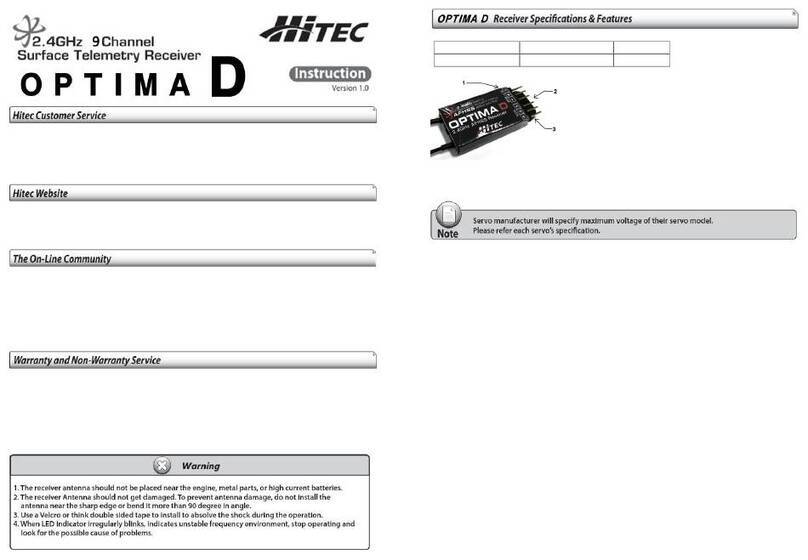
Hi-Tec
Hi-Tec OPTIMA D User manual
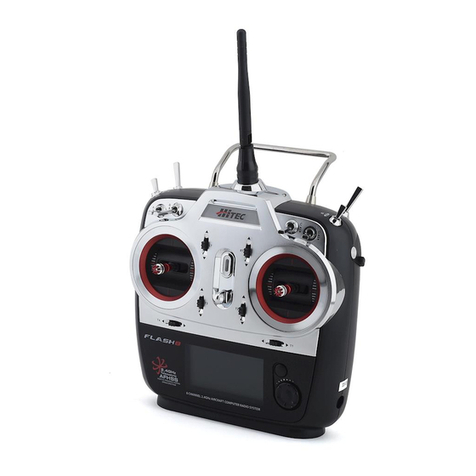
Hi-Tec
Hi-Tec Flash 8 User manual
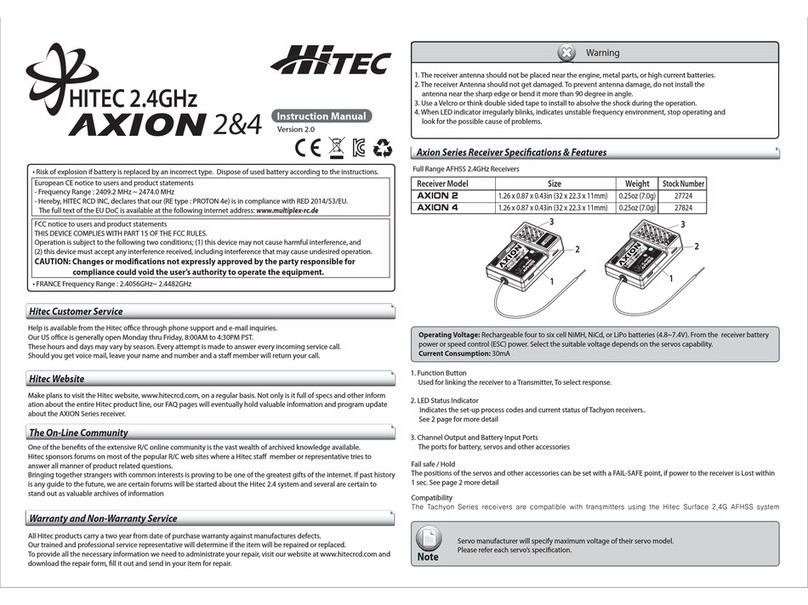
Hi-Tec
Hi-Tec AXION 2 User manual
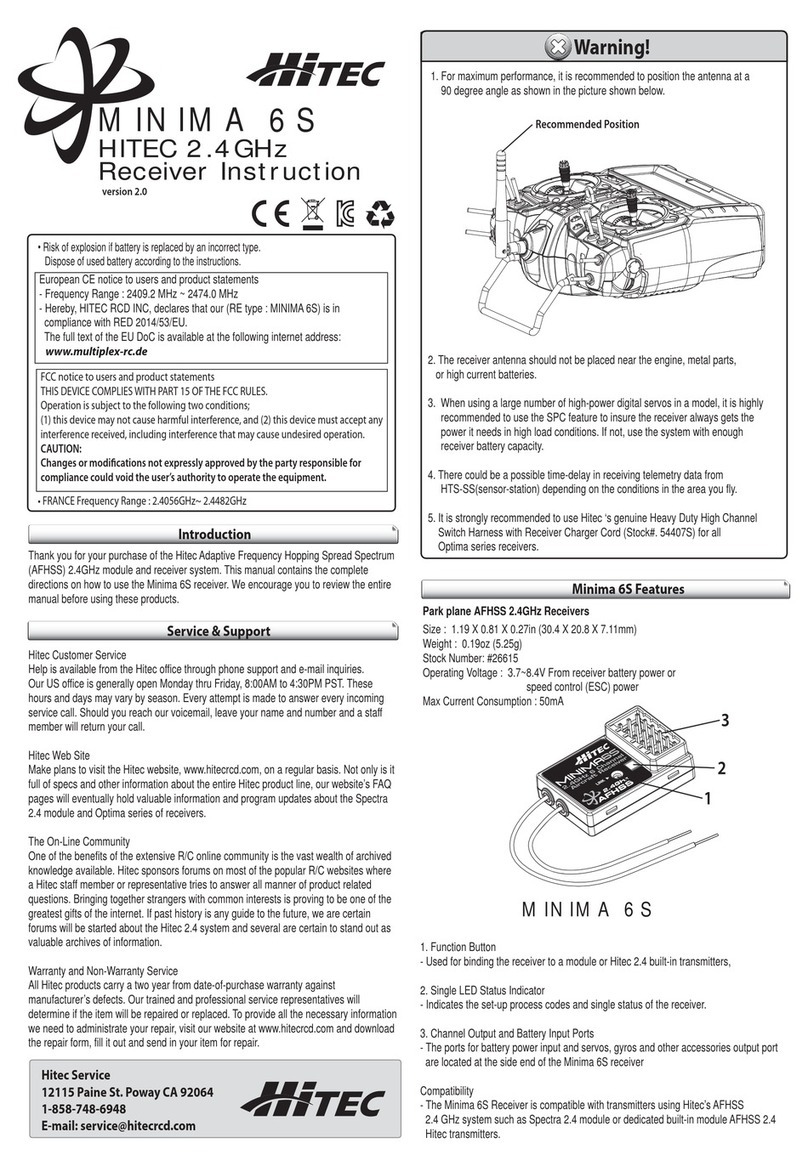
Hi-Tec
Hi-Tec MINIMA 6S User manual

Hi-Tec
Hi-Tec Lynx 4S User manual
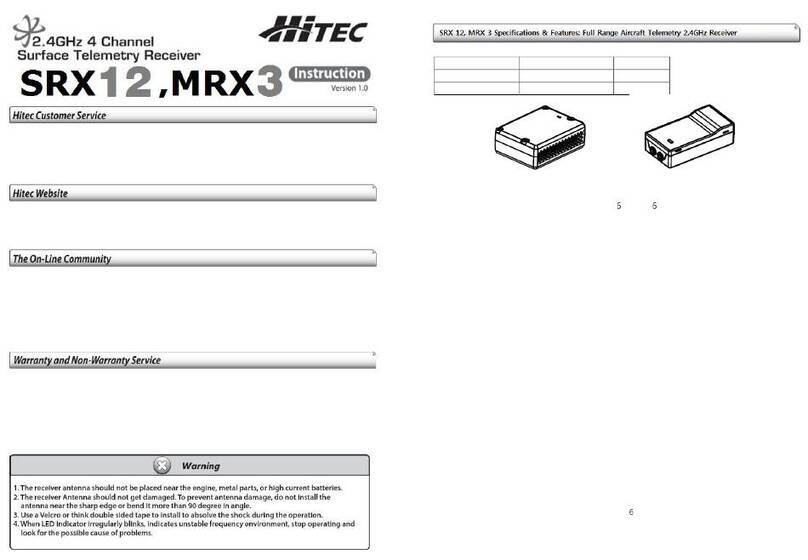
Hi-Tec
Hi-Tec SRX12 User manual
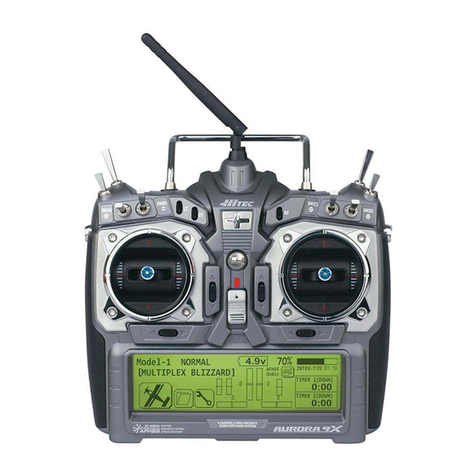
Hi-Tec
Hi-Tec Aurora 9X User manual
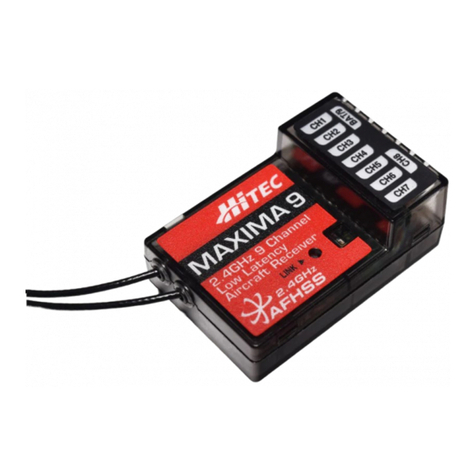
Hi-Tec
Hi-Tec Maxima Series User manual
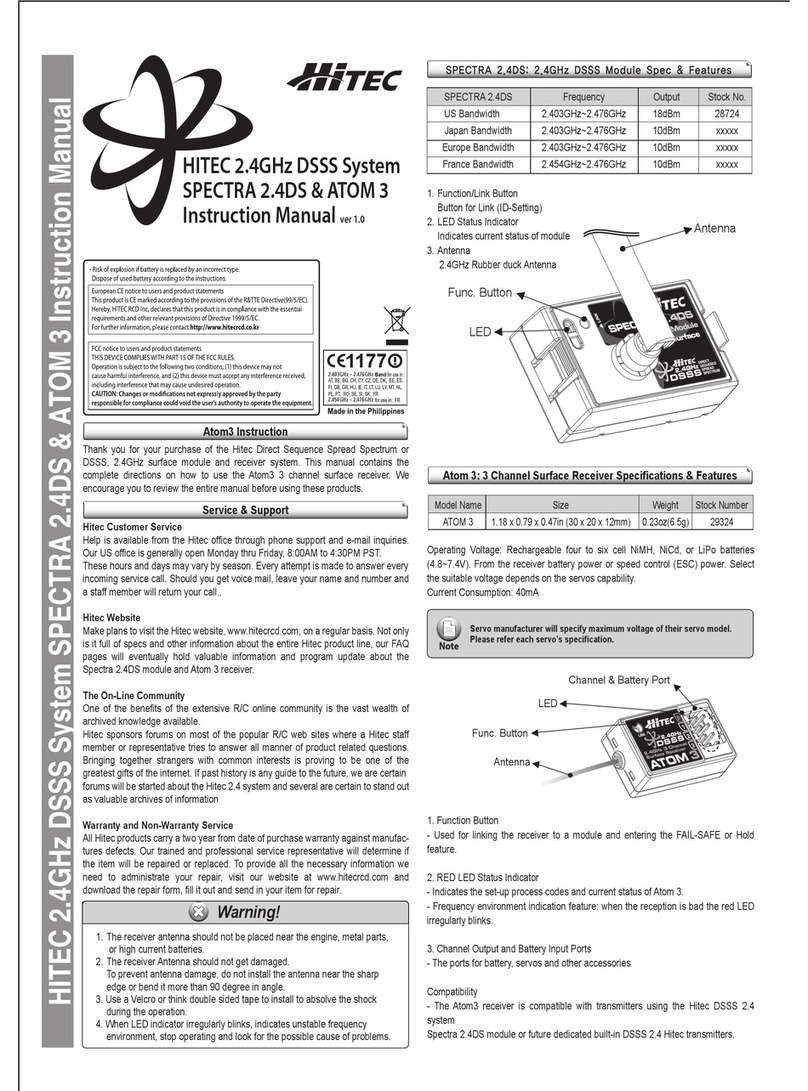
Hi-Tec
Hi-Tec ATOM3 User manual
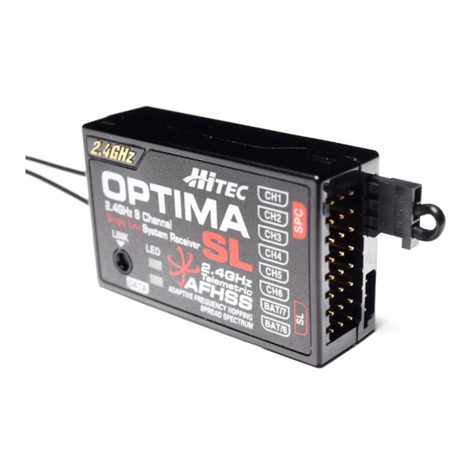
Hi-Tec
Hi-Tec OPTIMA SL User manual
